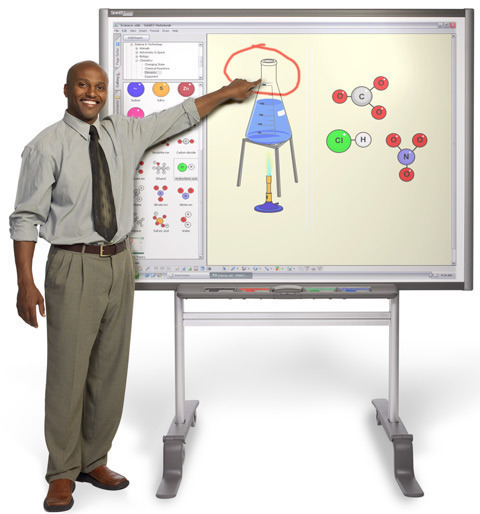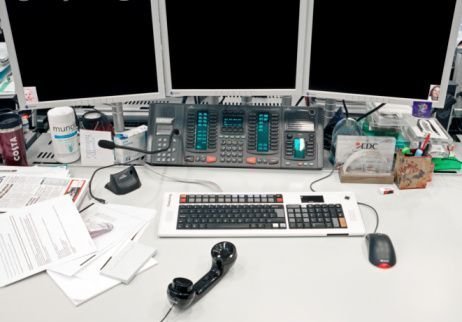An interactive whiteboard is a digital device capable of interacting with a computer and projecting images in a screen. This device is used for visual presentation in classrooms, workgroups and business meetings. An interactive whiteboard needs to be connected to a computer which generates the actual images or data which are then projected to the board. Most interactive whiteboards have keyboard and mouse functionalities, but some models are capable of whiteboarding functions like character recognition so notes can be written or recorded on the physical board itself.
How it Works
The interactive whiteboard can be connected to a computer through wires (i.e. USB cable) or through Bluetooth and infrared. A device driver also needs to be loaded unto the computer before the activating the device for the first time. After this, the interactive whiteboard activates automatically upon computer boot.
A positional system such as infrared or a tactile surface is then used to determine and store the images or characters written on the interactive board. Interactive whiteboards with this two way function use optical, laser, ultra-sonic, analog resistive, infrared or electromagnetic systems.
Different Types of Interactive Whiteboards
- Optical Interactive Whiteboards use an infrared light and a triangulation algorithm to determine the location of a marker on the board. With this system, any kind of material can be used on the whiteboard surface.
- Laser-Based Interactive Whiteboards are like Infrared optical whiteboards as they use triangulation to determine the location of the marker. However, laser based systems make use of moving lasers located at the edges to perform the triangulation. Thus, markers must have reflective surfaces.
- Ultrasonic-Based interactive Whiteboards use ultrasonic sound to triangulate the marker’s position. Ultrasonic sound is emitted by the stylus whenever it is pressed against the board’s surface. Microphones located at different positions along the board pick up the sound and triangulate the position.
- Analog Resistive Interactive Whiteboards utilize have two sets of resistive materials on their surface. These two surfaces generate electricity upon contact so the position of the stylus can be determined. Any type of marker can be used for this type of interactive whiteboard.
- Electromagnetic Interactive Whiteboards are one of the most popular types of interactive whiteboard systems. A special marker with a coil is used for writing and the board has an array of wires that generate electrical signals. The marker may also be passive and thus the x and y positions are determined by the changes in the electrical field caused by the coil. This system makes it possible for one to rest his or her wrist or hand upon the whiteboard without creating a false signal.
Some interactive whiteboards can work with programs. On these types of whiteboards, annotations, keyboard and mouse emulation, mouse-overs, pop-ups, and other functions can be used. Some markers also have a button that functions as mouse button so clicking and dragging items on the active screen are possible. Of course, like regular whiteboards, interactive whiteboards can also be damaged by permanent markers and normal wear and tear.




Follow Us!